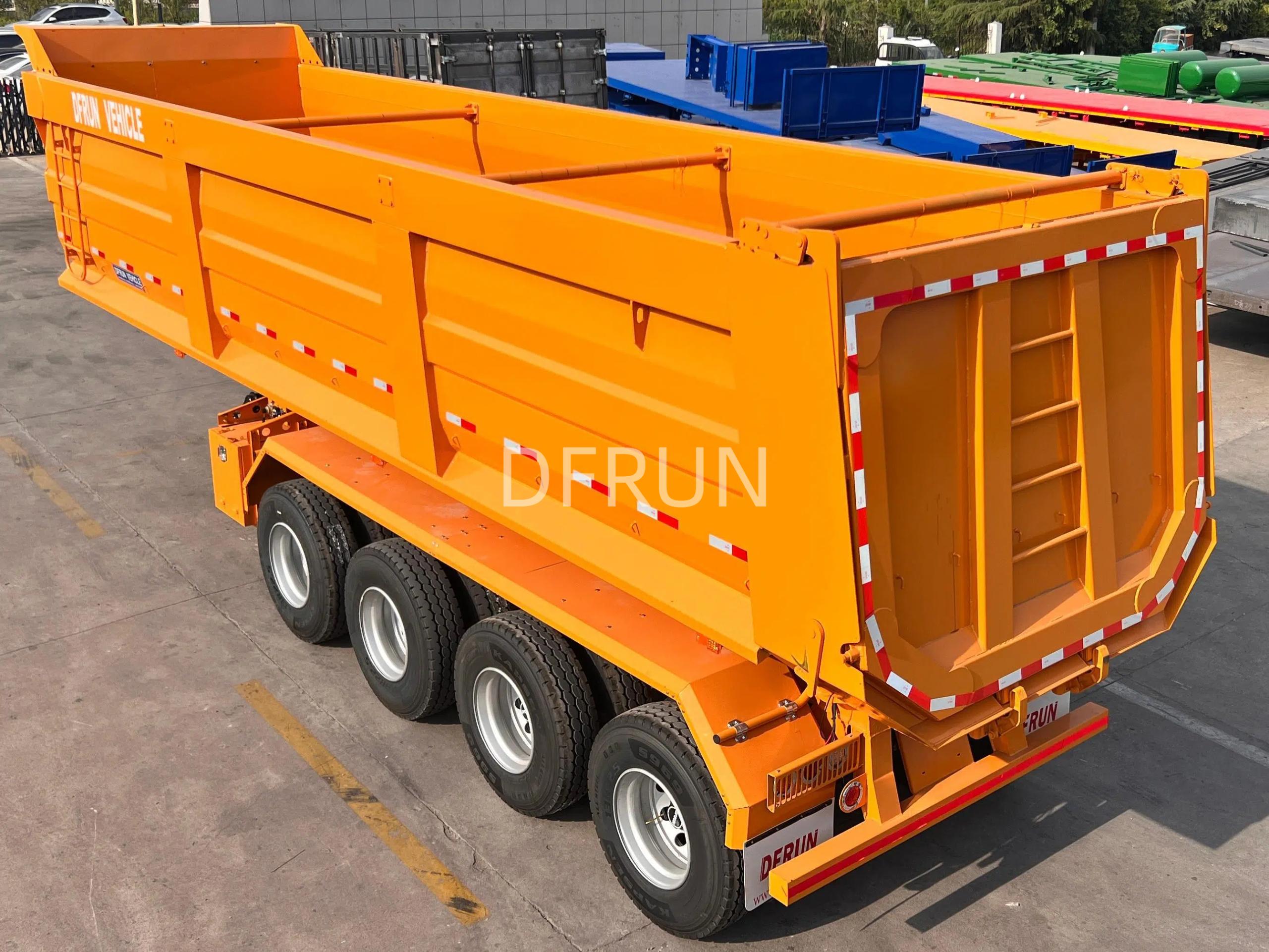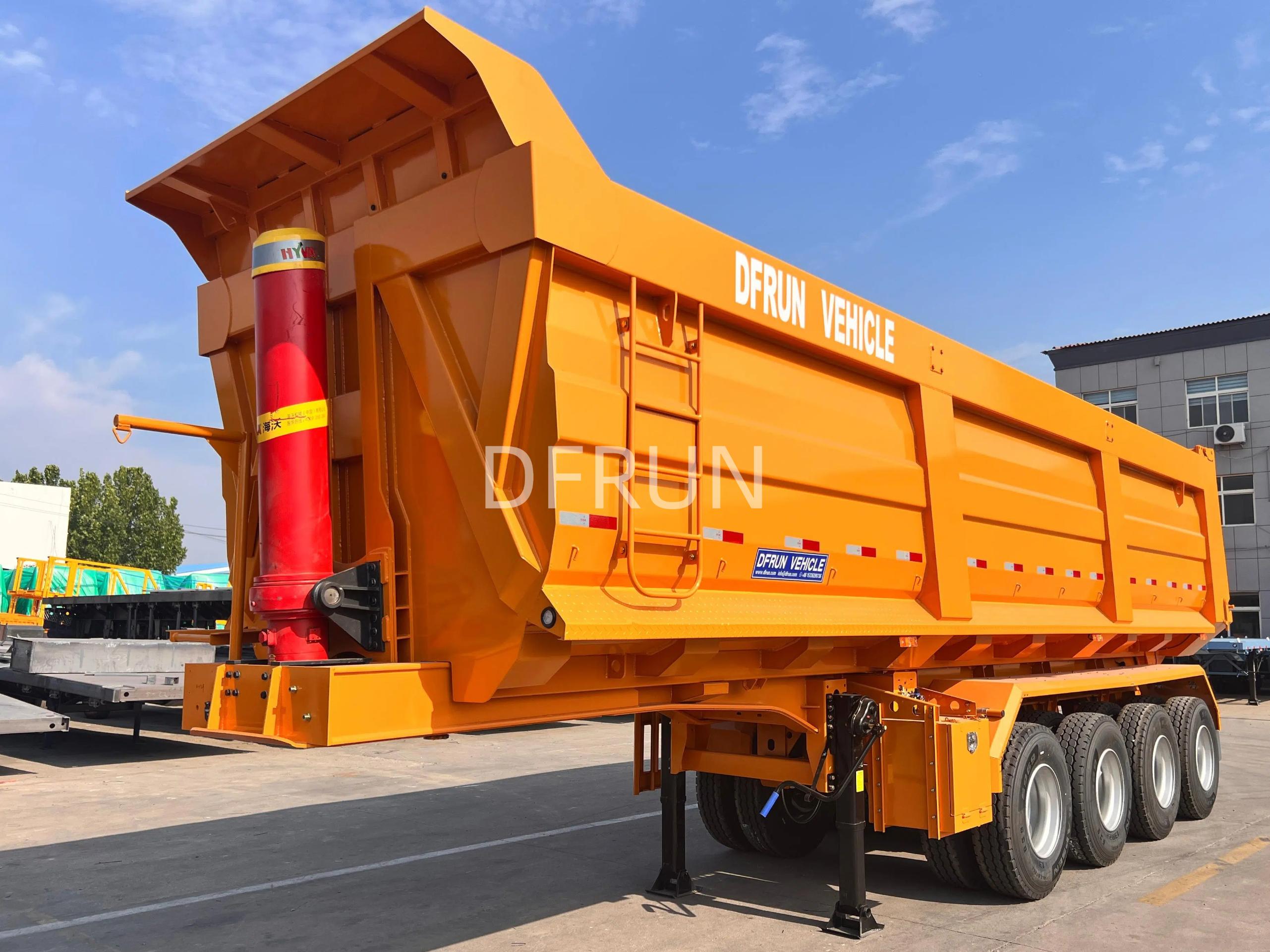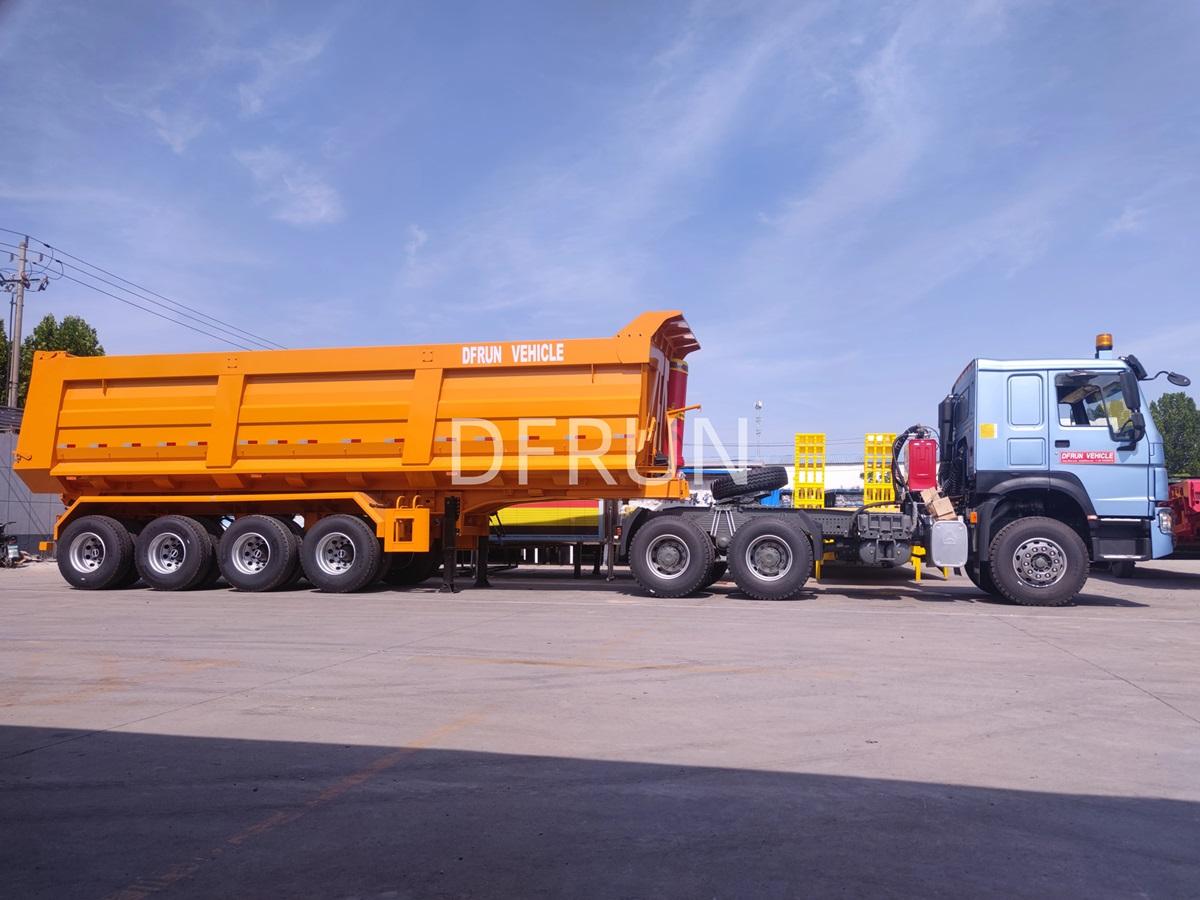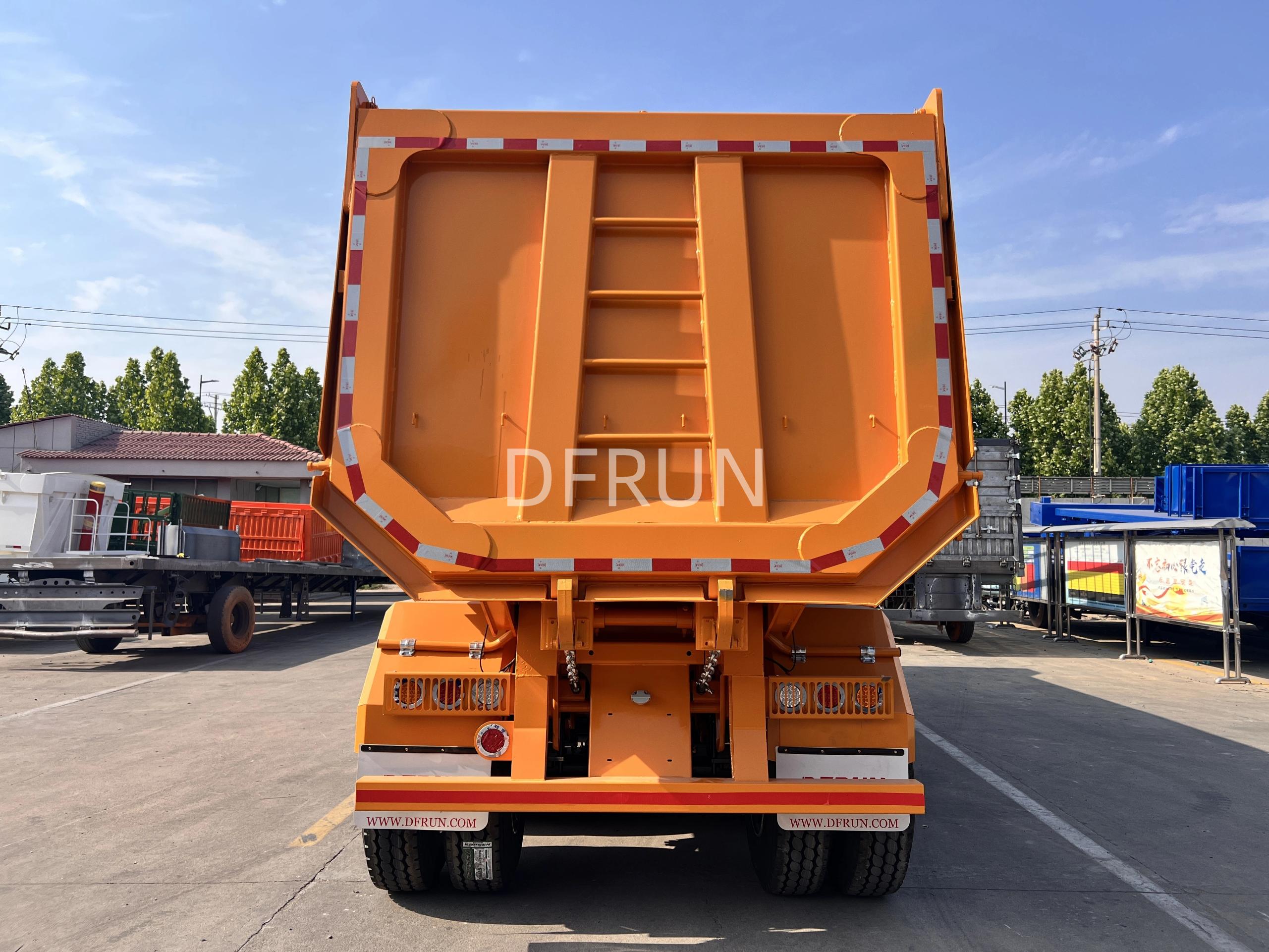4 axles 40m³ tipper trailer will be shipped to Senegal
Time:2025/6/30 14:54:12 Views:
4 axles 40m³ tipper trailer will be shipped to Senegal
Thanks to our customers for their trust, the 4 axles tipper trailer ordered by our customers has been produced and will be shipped soon.
We have produced the vehicle strictly in accordance with the standards, and the load capacity and appearance meet the customer's requirements, and provide customers with the best transportation solutions.

This tipper trailer is made of high-quality steel and has an excellent load-bearing capacity of 70-80 tons. It can be used to transport various sands, soils, and ores.

The main function of a tipper trailer is to tilt the cargo box to a certain angle through its own hydraulic lifting device to achieve automatic unloading of bulk goods (such as sand, coal, construction waste, crops, etc.) without relying on manual handling or additional unloading equipment, thereby efficiently completing the process from transportation to unloading of goods. It is widely used in construction, mining, agriculture, logistics and other scenarios that require transportation and unloading of bulk materials.

The advantages of tipper trailers mainly include:
• Efficient unloading: With the help of hydraulic lifting devices, cargo unloading can be completed quickly, which greatly shortens the unloading time and improves the overall transportation turnover efficiency.
• Save labor costs: No need for manual handling or reliance on additional equipment such as cranes, reducing manpower input and related costs.
• Wide range of applicable scenarios: It can transport a variety of bulk goods such as sand, coal, construction waste, agricultural materials, etc., and is suitable for multiple industries such as construction, mining, agriculture, and logistics.
• Improve safety: Reduce manual participation in the unloading process, reduce safety risks such as cargo damage and handling accidents.
• Flexible unloading methods: The cargo box design supports multiple methods such as rear unloading and side unloading, which can be adjusted according to the type of cargo and site conditions to meet different unloading needs.










